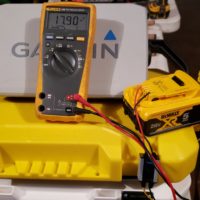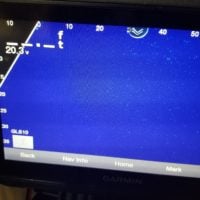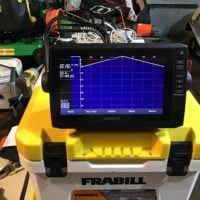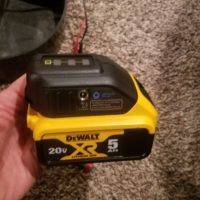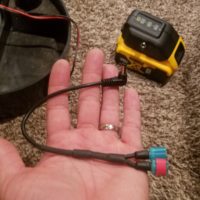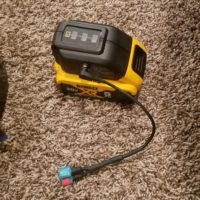Bman, I have done this exact project and can show you my bench test results. My apologies if this seems long winded but I have spent a ton of time looking for info so I though I might save someone else some legwork.
I have a Garmin Echomap+ 93sv with a GLS 10 sonar black box, PanoptixTM LVS32 transducer. I tested it with a 12 volt 7.5 amp hour battery fully charged using a fluke ammeter and found that the head unit alone only pulled about .25 amps. Once I turned on the Panoptics transducer it jumped up to .60 amps with the display on 100% brightness and depth and distance to maximum (this did make about a .15 amp difference). The brightness affect was hardly measurable from 10% to 90% and even at 100% only equaled about .07 amps. So, with everything on the most I could get it to pull was .60 amps.
The specs on the head unit say max 18 vlts. The specs on the GLS 10 say max 32 vlts. So, I’m opting to use the Dewalt 20 vlt- 5 Amp hour battery since that is what I’m using to run my Dewalt DCD996 on my 8″ K-drill auger. To bring the 20 volts down to acceptable range I am using an adjustable step down converter to bring it to 17.5 volts just to be safe (purchased from Amazon). https://www.amazon.com/gp/product/B017S2XC3E/ref=ppx_yo_dt_b_search_asin_title?ie=UTF8&psc=1.
I chose that particular module because it is a sealed unit and should be fairly waterproof.
I am still waiting on one part from Amazon to complete my set up. I need the 20vlt 3D printed connector that mates to the Dewalt batteries. As soon as I have that I will get it out on the ice for some real world testing. The Garmin has a setting to warn you when the voltage drops to a level that you choose…..I’m setting mine at 11.2 volts and will be using that as a reminder that I’m going to need to change the battery soon. I expect to get at least 5 hours on one battery. This kit is all being housed in a Frabil 13qt bait station and I have fashioned a livescope ducer pole using clear pvc. I will share pics of all of it after I get back from my first field test this week.
So, the system has been powered up and ran for about 10 minutes at 17.9 vlts using the 20vlt battery with no damage. Wish me luck!
